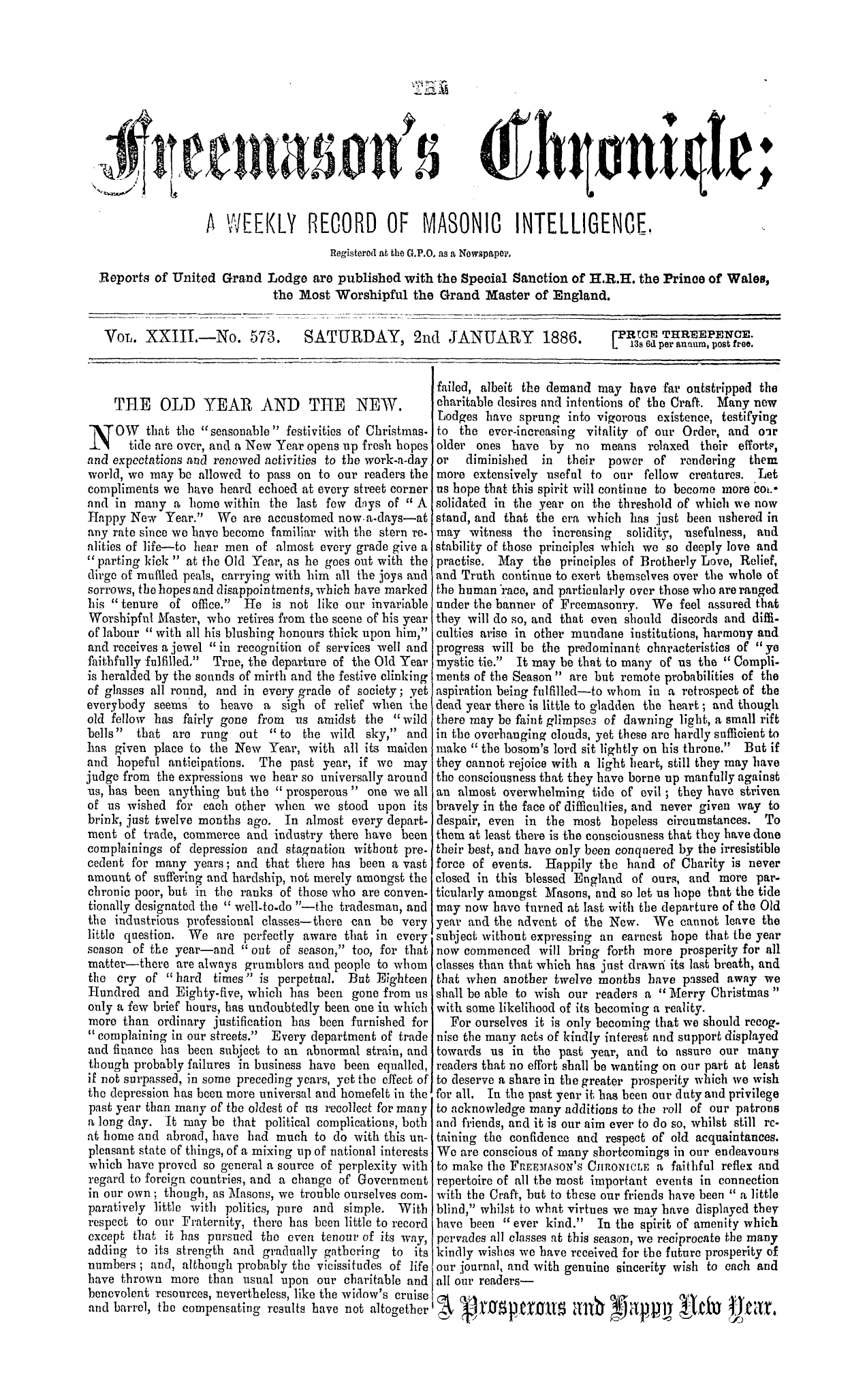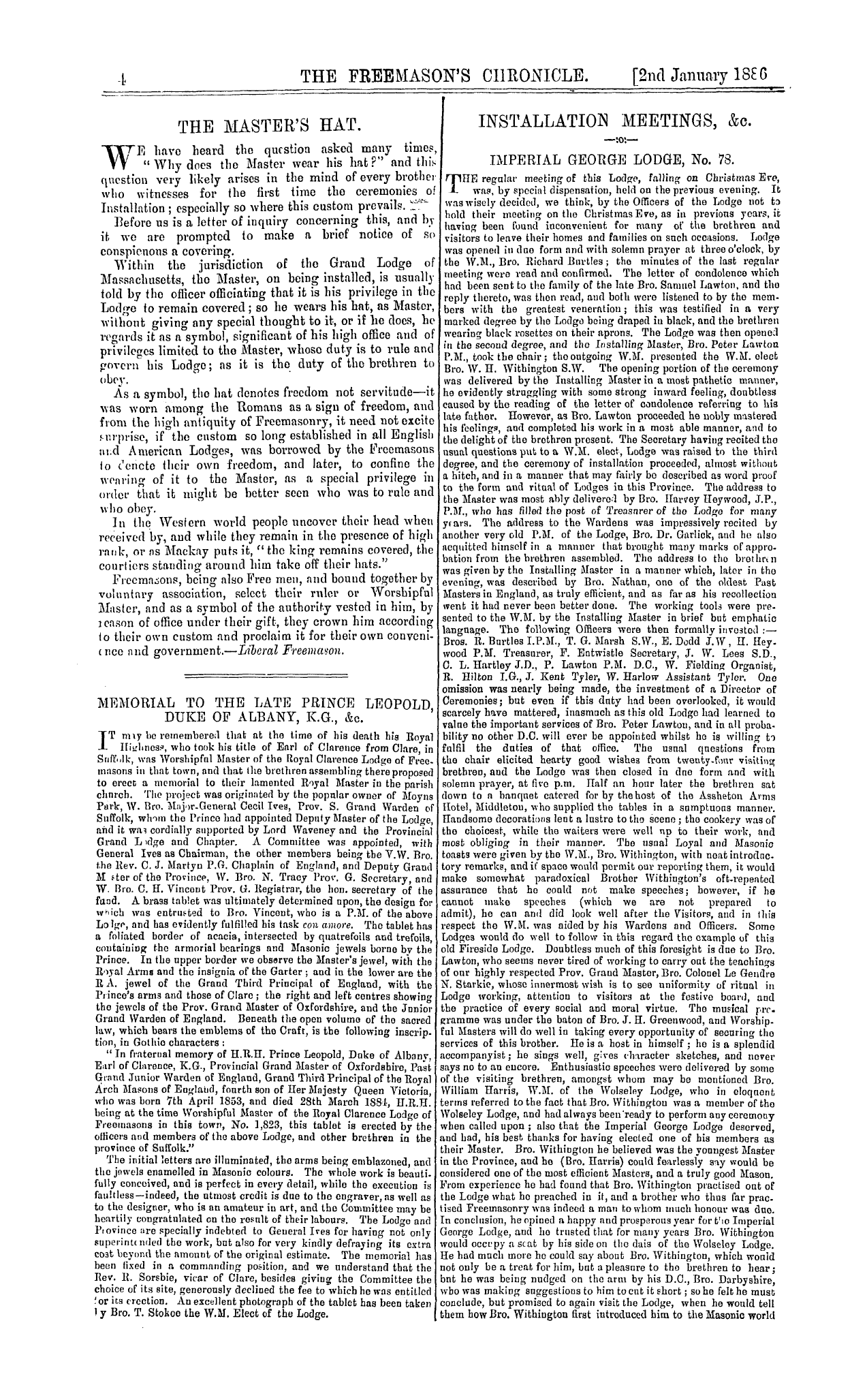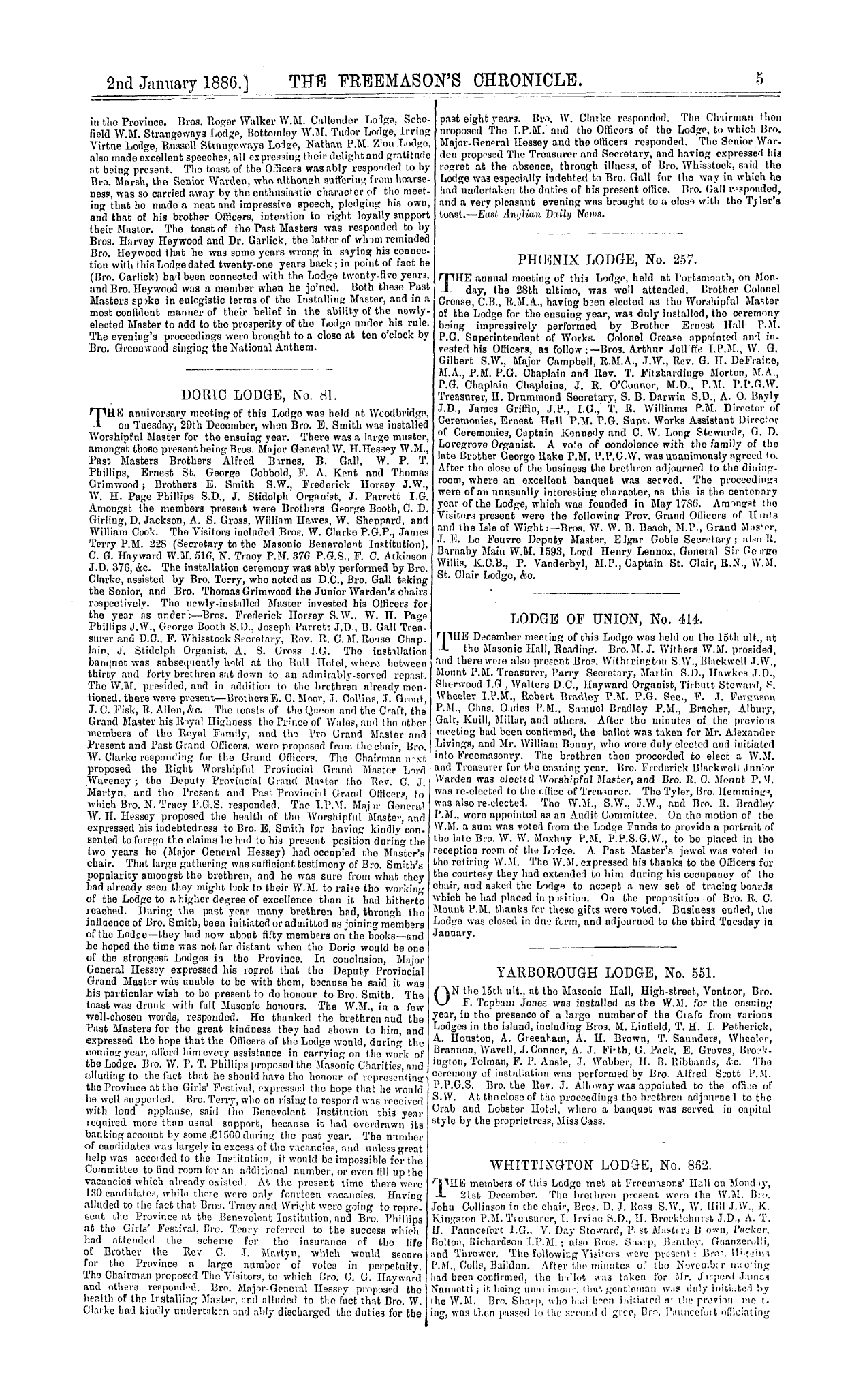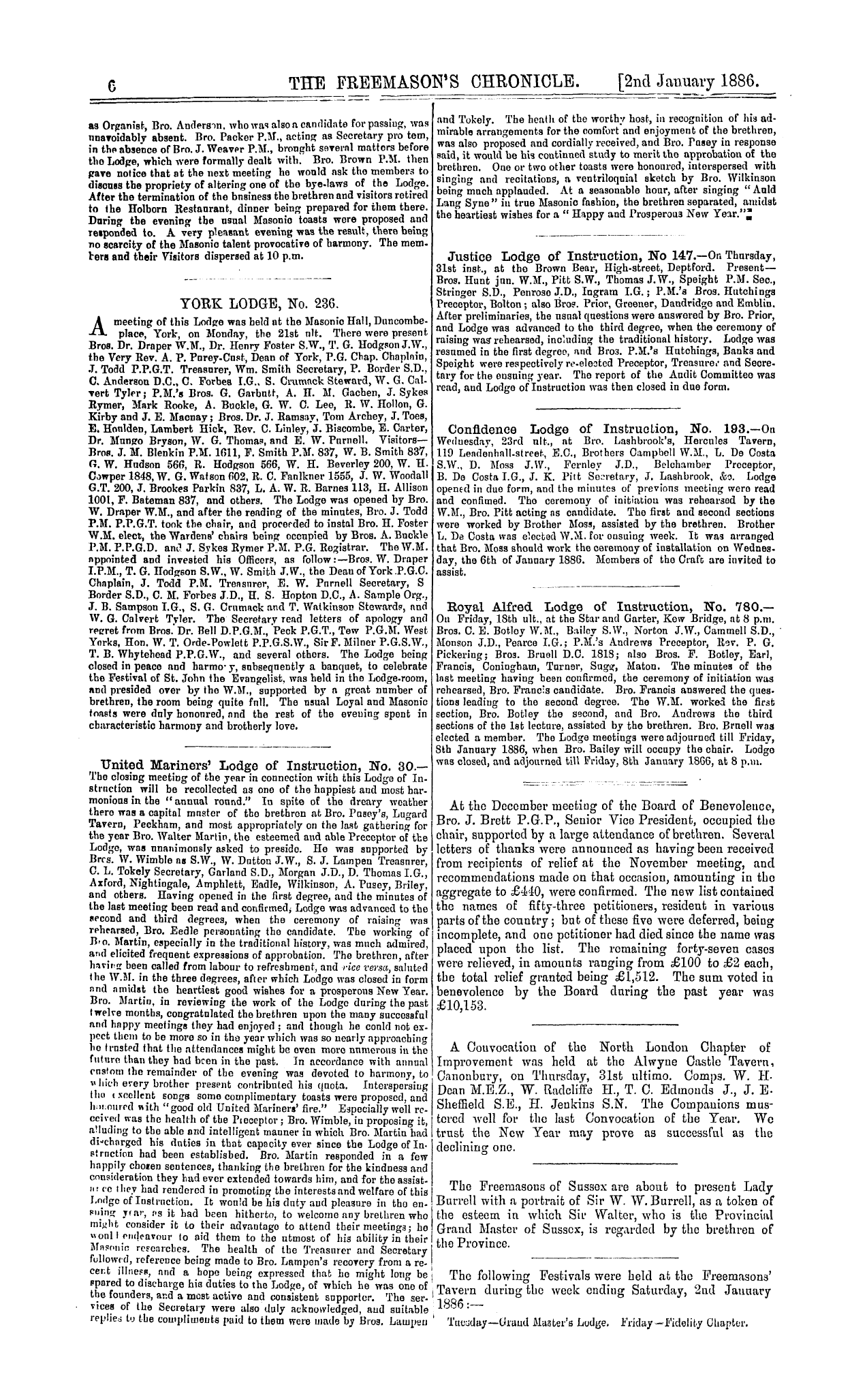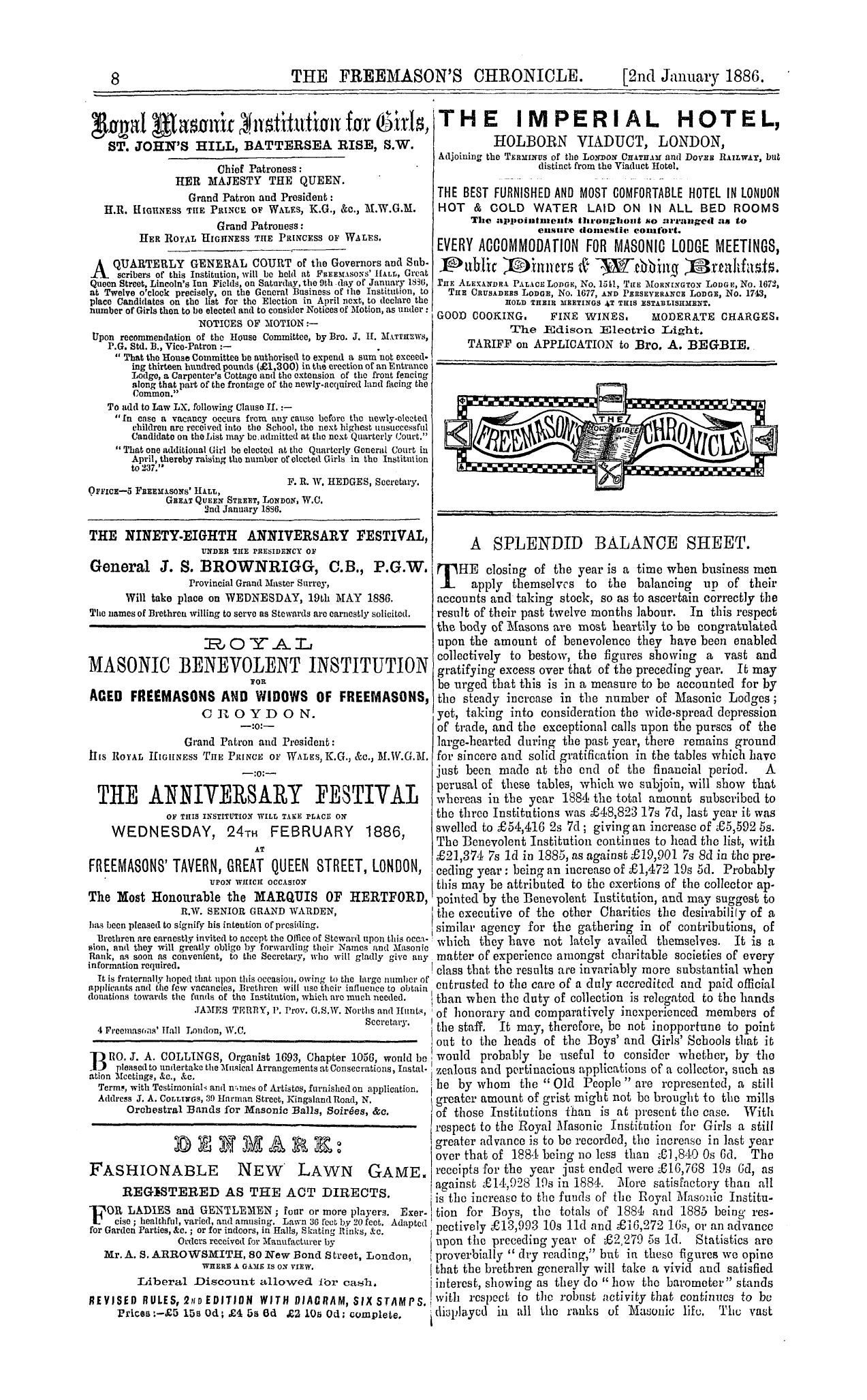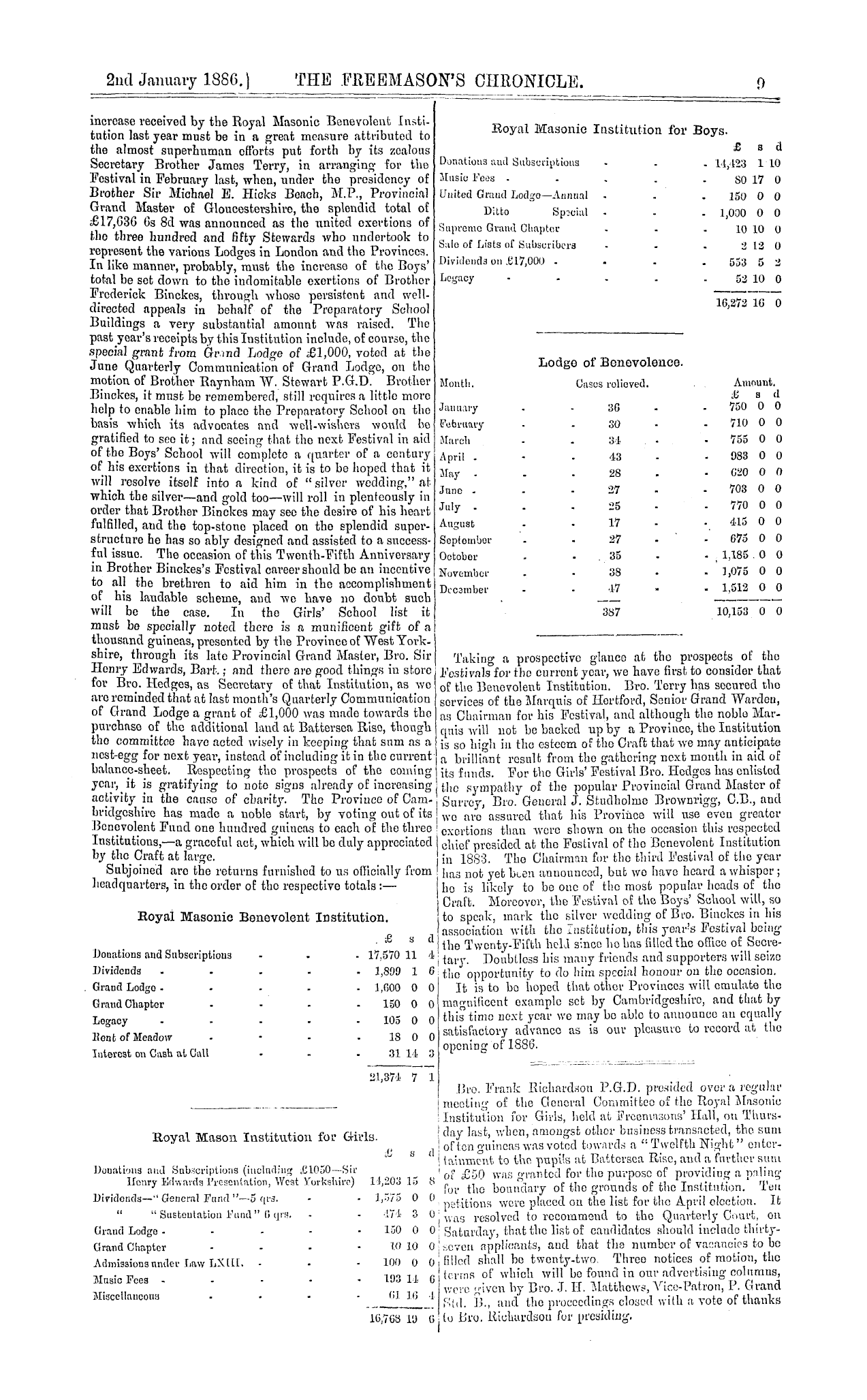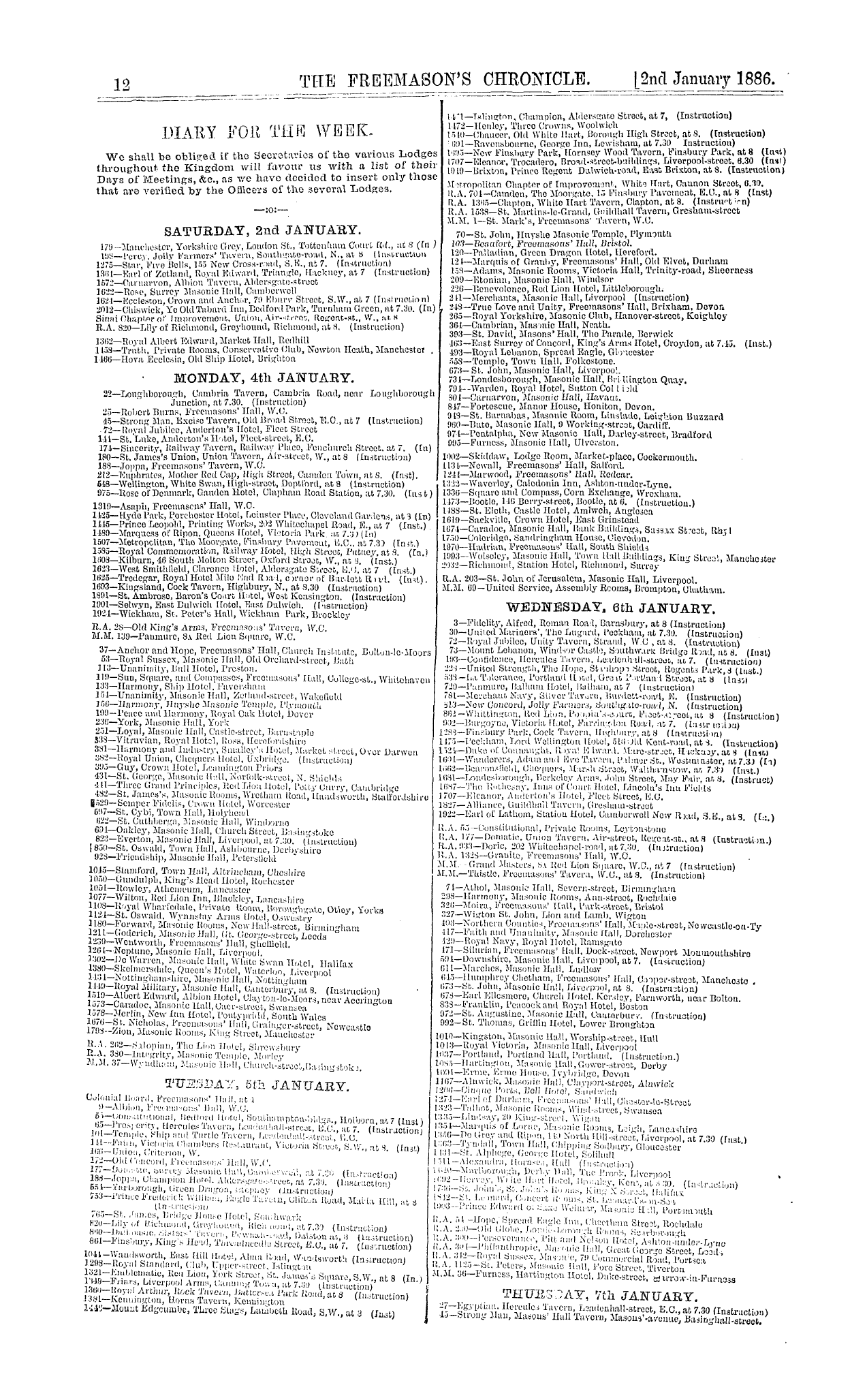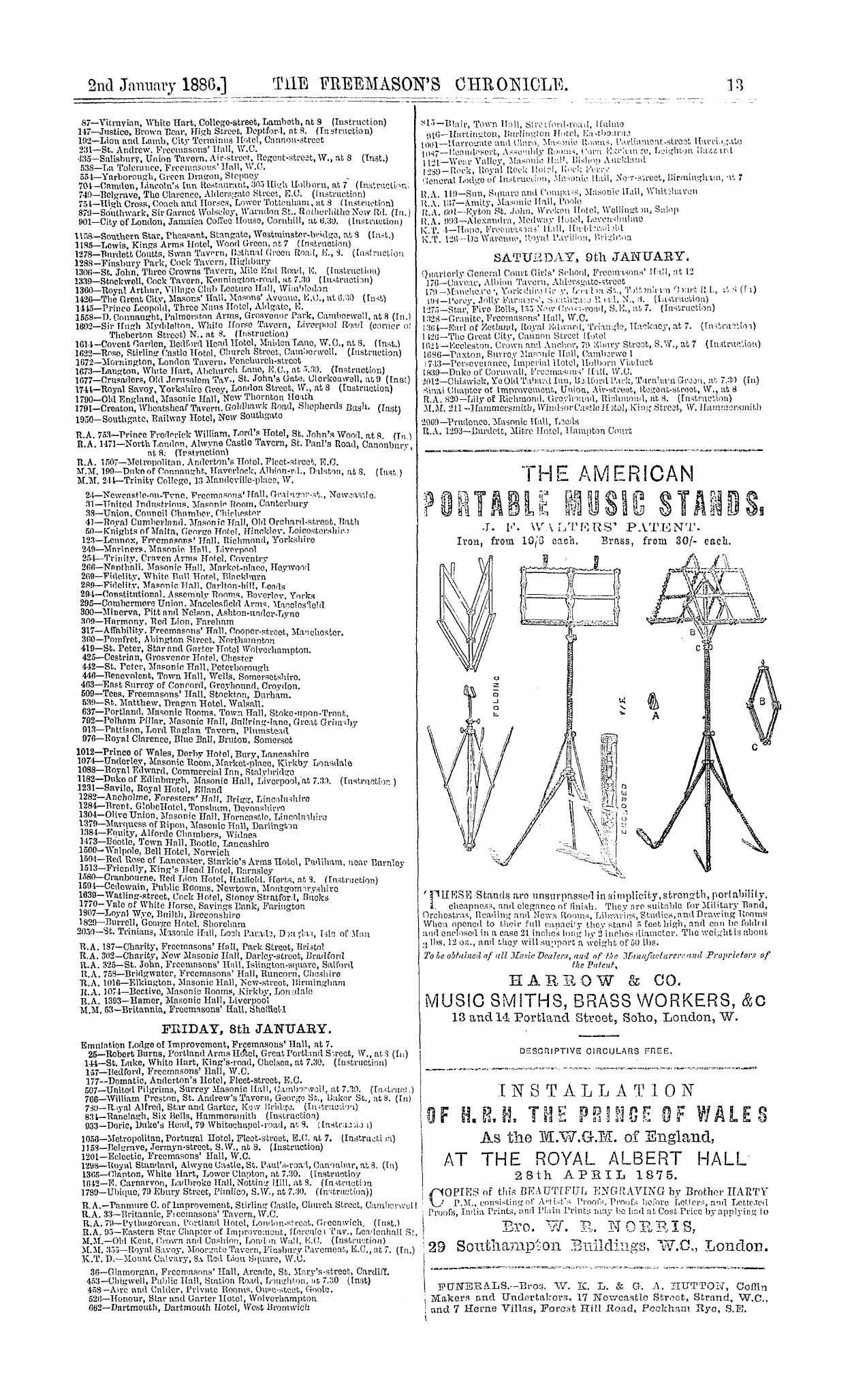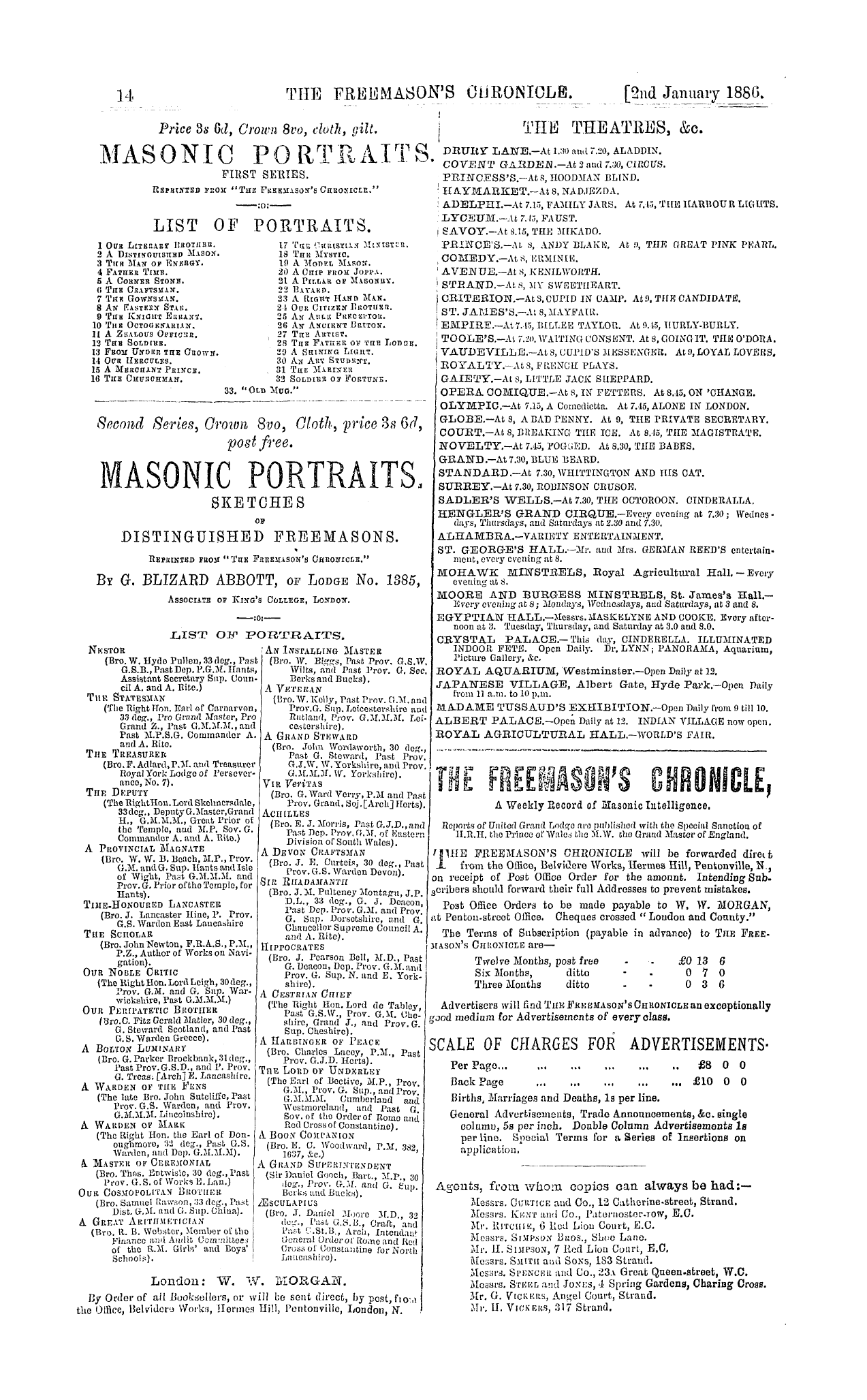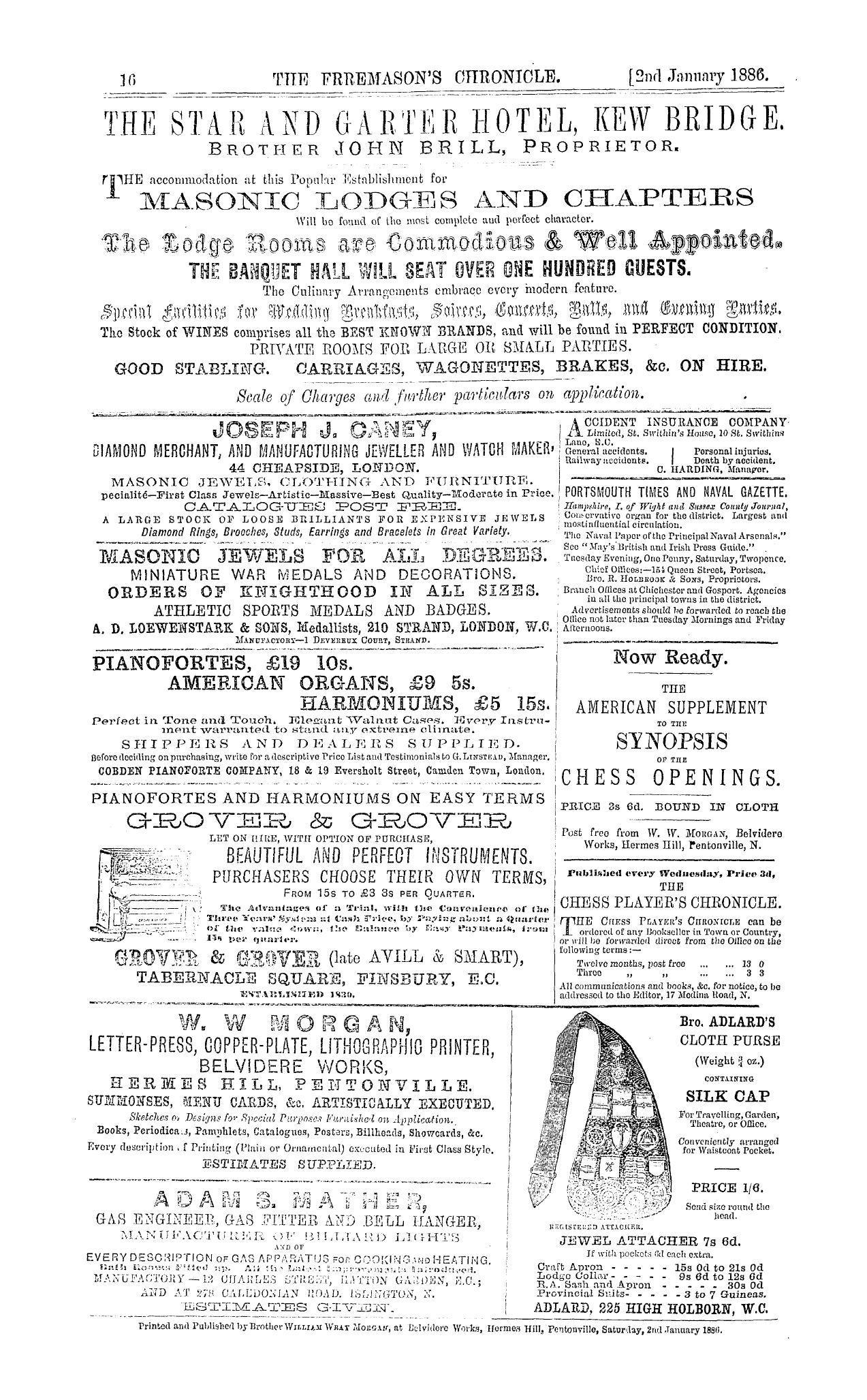-
Articles/Ads
Article CRYPTIC MASONRY. Page 1 of 2 Article CRYPTIC MASONRY. Page 1 of 2 →
Note: This text has been automatically extracted via Optical Character Recognition (OCR) software.
Cryptic Masonry.
CRYPTIC MASONRY .
A Historic Address yivcn hy Brother Henry W . Ruyy , ¦ at Freemasons' HaU , Providence , on 30 th Oct . 188 Z , { ' on the occasion of the Observance of the Twenty-Fifth Anniversary of the Grand Council of Royal and Select Blasters of Rhode Island .
TO trace the rise and progress of the Cryptic Rite is no easy task . The search has to be made along an often obscure way . There are no reliable sign-posts to point out the exact time nnd plnce when and where this part of the
Masonic system originated ; at tho best its early history appears fragmentary and uncertain . The scanty records available are often most disappointing in what they lack to make some of their statements clear and conclusive .
Ifc is an additional cause of perplexity that such various and conflicting theories are put forward by earnest advocates , whose inferences sometimes seem to bo exceedingly far-fetched and illogical . Of course there wonld bo
no difficulty if only ancient legend were accepted as authoritative , ancl mere tradition received as true history . Everything might at onco he settled by affirming that the degrees of Royal ancl Select Masters were instituted at
Jerusalem , as the present rituals of these degrees would suggest . Bnt no intelligent Craftsman entertains this 1 bought . He knows very well that Freemasonry in all of its departments has been subject to long-continued
processes of evolution , and that what we have to-day in the Masonic system and organisation is of comparatively modern presentation . Hence , he is quite prepared to
believe—according to what is a plain inference in the nature of things—that the Cryptic degrees were produced at a period far more recent than that from which we date the establishment of Freemasonry in its present form .
It does not come within tho scope of this address that I should make any extended reference to the questions relating to the ori gin ancl first manifestations of Cryptic
Masonry . I may only attempt , in as brief a manner as possible , to summarise certain opinions and conclusions which seem to me worthy of acceptance .
I find no trace of the existence of either of the two
leading degrees in the Cryptic Rite until the latter part of the eighteenth century . Possibly they were associated wifch the Rite of Perfection , introduced into this country in tbe year 17 G 6 , by Henry A . Francken , a Deputy
Inspector General , commissioned as such by Stephen Morin , who is often spoken of as the founder of the Scottish Rite in America . Morin , who derived his
authorit y to establish and propagate the higher degrees from the "Grand Council of Emperors of tho East and West , " afc Paris , made Francken his representative and agent in the doing of such work . Francken conferred similar
powers on Moses M . Hayes , of Massachusetts , who in turn gave like authorit y to Moses Cohen , who went to Jamaica , established a Consistory there , and conferred various degrees on that body and " elsewhere . A certificate
from Cohen , dated 9 th November 1790 , represents that Abraham Jacobs had been initiated into tbo degree of " Select Masons of Twenty Seven . " It is claimed " there is no earlier written record of the Select Master ' s degree
than this , though there are numerous incidental references supposed to point to its having been known both at Paris and Berlin . Whether tho degree originated with Cohen or Jacobs ; or was manufactured at CharlestonS . C . or
, , bronght there from Berlin , in the manner described b y Holbrook , who says a certified copy of tho original ritual of the " Royal Select Degree" wns deposited , in 1788 , in the archives of the Grand Council of the Princes of
Jerusalem , at Charleston ; or yefc was produced from some other source , docs not appear altogether clear . There is no doubt , however , that Jacobs conferred the degree of Select Master in various parts of the country , about the
year 1790 . It is also a well established faefcYhafc a year or two previously , Joseph M . Meyora , Deputy Inspector foi Maryland , had begun to confer , nnd authorise the confernag of , the Select Master ' s degree in connection with the
Rite of Perfection . There is likewise evidence to f , how that Henry Williams , of Baltimore ( who lived in that city as early as 1790 ) , a prominent Craftsman , referred to in
several well authenticated documents as " Grand Inspector General , " and having exalted rights and powers supposed to have been derived from tlic Grand Lodge of Berlin and Bremen , authorised the woiking of the djgree of Select
Cryptic Masonry.
Masons , and also the establishment of a Grand . Council , representing the same , iu the cifcy of Baltimore . This was in 1792 . The degree of Royal Master was hardly known afc thafc date , if ifc were in existence . It made its apoearance in
New York in the first decade of the present century , and nofc unlikely may claim thafc cifcy as its birthplace . However this may be , tho two degrees became closely associated ,
and wero conferred together , under various authorisation , more or less regnlar , in separate Councils and in Chapters of Royal Arch Masons , from about the date of 1804-6 .
Thus early in the century fche Cryptic Rite had gained some sort of recognition in Baltimore , Charleston , New York cifcy , and several other places . It was not ,
however , very widely known , or generally regarded as of much importance . It had but a feeble organic life , and occupied at the best only a sort of semi-detached position to the Masonic system and organization .
In 1816 , Jeremy L . Cross became interested in the Cryptic Rite , receiving the degree of Select Master from Phillip P . Eckel , of Baltimore , and also ( probably ) a commission to confer tho degree npon Royal Arch Masons
wherever he might meet them . Cross soon ascertained that a " Grand Council of Select Masters , " in New York city , was granting charters to subordinate bodies . He asked authority to established Councils ancl grant warrants ,
and was empowered to do this by a commission issued by Eckel and Niles in 1817 . Two years later , having in tho interim received the degree of Royal Master , Cross was given augmented powers ; for on the 29 fch September 1819
acting in the name ancl under the authority of the " Grand Council of Royal ancl Select Masters , " of the State of Maryland , he gave a charter , "without expence , " to Providence Council of Royal and Select Masters , the first organisation of Cryptic Masons in Rhode Island .
-A- ^ -FT W ' «" Coming now , after so extended a preface , to the establishment of tbe Cryptic Rite in Rhode Island , I call ntfcontion to a meeting held at Masons Hall , Providence ,
28 th March 1818 . This was a gathering of " Royal Arch Masons , who have from time to time received the degree of Royal Master . " Samuel Jackson , Caleb Earle , William
Wilkinson , Asa Bosworth , and other prominent brethren of thafc olden time , were among tho earnest Cryptic Masons who took counsel toe-ether for the establishment of a new
organisation . At an adjourned meeting , held 19 th May 1818 , it was decided that " the degree of Select Master be attached to this Council . " The first ; gatherings only recognised " Royal Masters . " Tho organisation was
perfected , and under date of 27 th September 1819 , ifc is recorded thafc " Companion Jeremy L . Cross presented this Council with a Charter free of all expense . " The charter
begins as follows : " By the high powers in me vested by the Grand Council of Royal and Select Masters , of the city of Baltimore , iu the State of Maryland , North America , "—and the document is signed by Jeremy L . Cross D . G . P .
Providence Council flourished greatly for a time and gained large additions to its membership . It suffered almost total annihilation from the Anti-Masonic storm ; and for a time , while it had a name to live , delegated its
powers to Providence Royal Arch Chapter , which conferred the degrees according to its convenience and the desires of Companions to receive them . In 18-11 , Providence Council was revived , ancl has maintained its existence , under conditions of increasing prosperity , until now .
In 1847 , Pawtticket Council of Royal and Select Masters was organised iu Pawtuckefc . This body received its charter from the Grand Council of Massachusetts . In
1859-00 , Webb Council , of Warren , was instituted , having been granted a charter by tho Grand Council of Connecticut . x \ t a much earlier date a body of Royal ancl Select
Masters had been organised afc Newport , under a charter obtained from the Supreme Council of the Scottish Rite for tho Southern Jurisdiction .
In 1800 , therefore , afc the time of the creation of the Grand Council governing the Cryptic Rito in Rhode Island , there wero four bodies in the State , each deriving its authorit y from a separate source . The membership of
the four Councils aggregated about two hundred aud fifty . But little interest was taken in the Cryptic degrees or organisations . Tho experiment had been tried of giving
them to the control of Royal Arch Chapters , but the experiment had not met tho views of brethren who were most devoted to the Rite . At this juncture it was determined
Note: This text has been automatically extracted via Optical Character Recognition (OCR) software.
Cryptic Masonry.
CRYPTIC MASONRY .
A Historic Address yivcn hy Brother Henry W . Ruyy , ¦ at Freemasons' HaU , Providence , on 30 th Oct . 188 Z , { ' on the occasion of the Observance of the Twenty-Fifth Anniversary of the Grand Council of Royal and Select Blasters of Rhode Island .
TO trace the rise and progress of the Cryptic Rite is no easy task . The search has to be made along an often obscure way . There are no reliable sign-posts to point out the exact time nnd plnce when and where this part of the
Masonic system originated ; at tho best its early history appears fragmentary and uncertain . The scanty records available are often most disappointing in what they lack to make some of their statements clear and conclusive .
Ifc is an additional cause of perplexity that such various and conflicting theories are put forward by earnest advocates , whose inferences sometimes seem to bo exceedingly far-fetched and illogical . Of course there wonld bo
no difficulty if only ancient legend were accepted as authoritative , ancl mere tradition received as true history . Everything might at onco he settled by affirming that the degrees of Royal ancl Select Masters were instituted at
Jerusalem , as the present rituals of these degrees would suggest . Bnt no intelligent Craftsman entertains this 1 bought . He knows very well that Freemasonry in all of its departments has been subject to long-continued
processes of evolution , and that what we have to-day in the Masonic system and organisation is of comparatively modern presentation . Hence , he is quite prepared to
believe—according to what is a plain inference in the nature of things—that the Cryptic degrees were produced at a period far more recent than that from which we date the establishment of Freemasonry in its present form .
It does not come within tho scope of this address that I should make any extended reference to the questions relating to the ori gin ancl first manifestations of Cryptic
Masonry . I may only attempt , in as brief a manner as possible , to summarise certain opinions and conclusions which seem to me worthy of acceptance .
I find no trace of the existence of either of the two
leading degrees in the Cryptic Rite until the latter part of the eighteenth century . Possibly they were associated wifch the Rite of Perfection , introduced into this country in tbe year 17 G 6 , by Henry A . Francken , a Deputy
Inspector General , commissioned as such by Stephen Morin , who is often spoken of as the founder of the Scottish Rite in America . Morin , who derived his
authorit y to establish and propagate the higher degrees from the "Grand Council of Emperors of tho East and West , " afc Paris , made Francken his representative and agent in the doing of such work . Francken conferred similar
powers on Moses M . Hayes , of Massachusetts , who in turn gave like authorit y to Moses Cohen , who went to Jamaica , established a Consistory there , and conferred various degrees on that body and " elsewhere . A certificate
from Cohen , dated 9 th November 1790 , represents that Abraham Jacobs had been initiated into tbo degree of " Select Masons of Twenty Seven . " It is claimed " there is no earlier written record of the Select Master ' s degree
than this , though there are numerous incidental references supposed to point to its having been known both at Paris and Berlin . Whether tho degree originated with Cohen or Jacobs ; or was manufactured at CharlestonS . C . or
, , bronght there from Berlin , in the manner described b y Holbrook , who says a certified copy of tho original ritual of the " Royal Select Degree" wns deposited , in 1788 , in the archives of the Grand Council of the Princes of
Jerusalem , at Charleston ; or yefc was produced from some other source , docs not appear altogether clear . There is no doubt , however , that Jacobs conferred the degree of Select Master in various parts of the country , about the
year 1790 . It is also a well established faefcYhafc a year or two previously , Joseph M . Meyora , Deputy Inspector foi Maryland , had begun to confer , nnd authorise the confernag of , the Select Master ' s degree in connection with the
Rite of Perfection . There is likewise evidence to f , how that Henry Williams , of Baltimore ( who lived in that city as early as 1790 ) , a prominent Craftsman , referred to in
several well authenticated documents as " Grand Inspector General , " and having exalted rights and powers supposed to have been derived from tlic Grand Lodge of Berlin and Bremen , authorised the woiking of the djgree of Select
Cryptic Masonry.
Masons , and also the establishment of a Grand . Council , representing the same , iu the cifcy of Baltimore . This was in 1792 . The degree of Royal Master was hardly known afc thafc date , if ifc were in existence . It made its apoearance in
New York in the first decade of the present century , and nofc unlikely may claim thafc cifcy as its birthplace . However this may be , tho two degrees became closely associated ,
and wero conferred together , under various authorisation , more or less regnlar , in separate Councils and in Chapters of Royal Arch Masons , from about the date of 1804-6 .
Thus early in the century fche Cryptic Rite had gained some sort of recognition in Baltimore , Charleston , New York cifcy , and several other places . It was not ,
however , very widely known , or generally regarded as of much importance . It had but a feeble organic life , and occupied at the best only a sort of semi-detached position to the Masonic system and organization .
In 1816 , Jeremy L . Cross became interested in the Cryptic Rite , receiving the degree of Select Master from Phillip P . Eckel , of Baltimore , and also ( probably ) a commission to confer tho degree npon Royal Arch Masons
wherever he might meet them . Cross soon ascertained that a " Grand Council of Select Masters , " in New York city , was granting charters to subordinate bodies . He asked authority to established Councils ancl grant warrants ,
and was empowered to do this by a commission issued by Eckel and Niles in 1817 . Two years later , having in tho interim received the degree of Royal Master , Cross was given augmented powers ; for on the 29 fch September 1819
acting in the name ancl under the authority of the " Grand Council of Royal ancl Select Masters , " of the State of Maryland , he gave a charter , "without expence , " to Providence Council of Royal and Select Masters , the first organisation of Cryptic Masons in Rhode Island .
-A- ^ -FT W ' «" Coming now , after so extended a preface , to the establishment of tbe Cryptic Rite in Rhode Island , I call ntfcontion to a meeting held at Masons Hall , Providence ,
28 th March 1818 . This was a gathering of " Royal Arch Masons , who have from time to time received the degree of Royal Master . " Samuel Jackson , Caleb Earle , William
Wilkinson , Asa Bosworth , and other prominent brethren of thafc olden time , were among tho earnest Cryptic Masons who took counsel toe-ether for the establishment of a new
organisation . At an adjourned meeting , held 19 th May 1818 , it was decided that " the degree of Select Master be attached to this Council . " The first ; gatherings only recognised " Royal Masters . " Tho organisation was
perfected , and under date of 27 th September 1819 , ifc is recorded thafc " Companion Jeremy L . Cross presented this Council with a Charter free of all expense . " The charter
begins as follows : " By the high powers in me vested by the Grand Council of Royal and Select Masters , of the city of Baltimore , iu the State of Maryland , North America , "—and the document is signed by Jeremy L . Cross D . G . P .
Providence Council flourished greatly for a time and gained large additions to its membership . It suffered almost total annihilation from the Anti-Masonic storm ; and for a time , while it had a name to live , delegated its
powers to Providence Royal Arch Chapter , which conferred the degrees according to its convenience and the desires of Companions to receive them . In 18-11 , Providence Council was revived , ancl has maintained its existence , under conditions of increasing prosperity , until now .
In 1847 , Pawtticket Council of Royal and Select Masters was organised iu Pawtuckefc . This body received its charter from the Grand Council of Massachusetts . In
1859-00 , Webb Council , of Warren , was instituted , having been granted a charter by tho Grand Council of Connecticut . x \ t a much earlier date a body of Royal ancl Select
Masters had been organised afc Newport , under a charter obtained from the Supreme Council of the Scottish Rite for tho Southern Jurisdiction .
In 1800 , therefore , afc the time of the creation of the Grand Council governing the Cryptic Rito in Rhode Island , there wero four bodies in the State , each deriving its authorit y from a separate source . The membership of
the four Councils aggregated about two hundred aud fifty . But little interest was taken in the Cryptic degrees or organisations . Tho experiment had been tried of giving
them to the control of Royal Arch Chapters , but the experiment had not met tho views of brethren who were most devoted to the Rite . At this juncture it was determined
